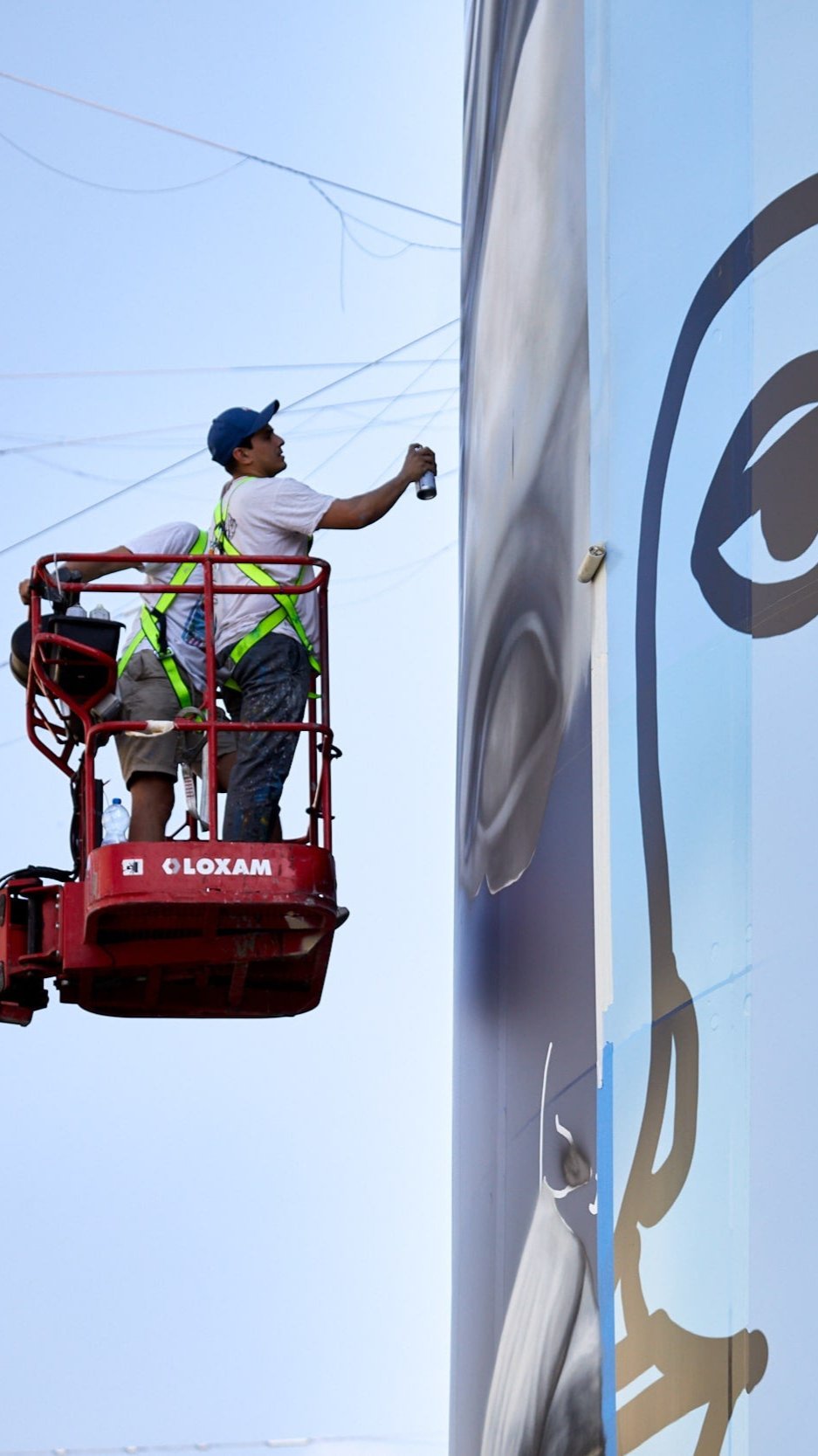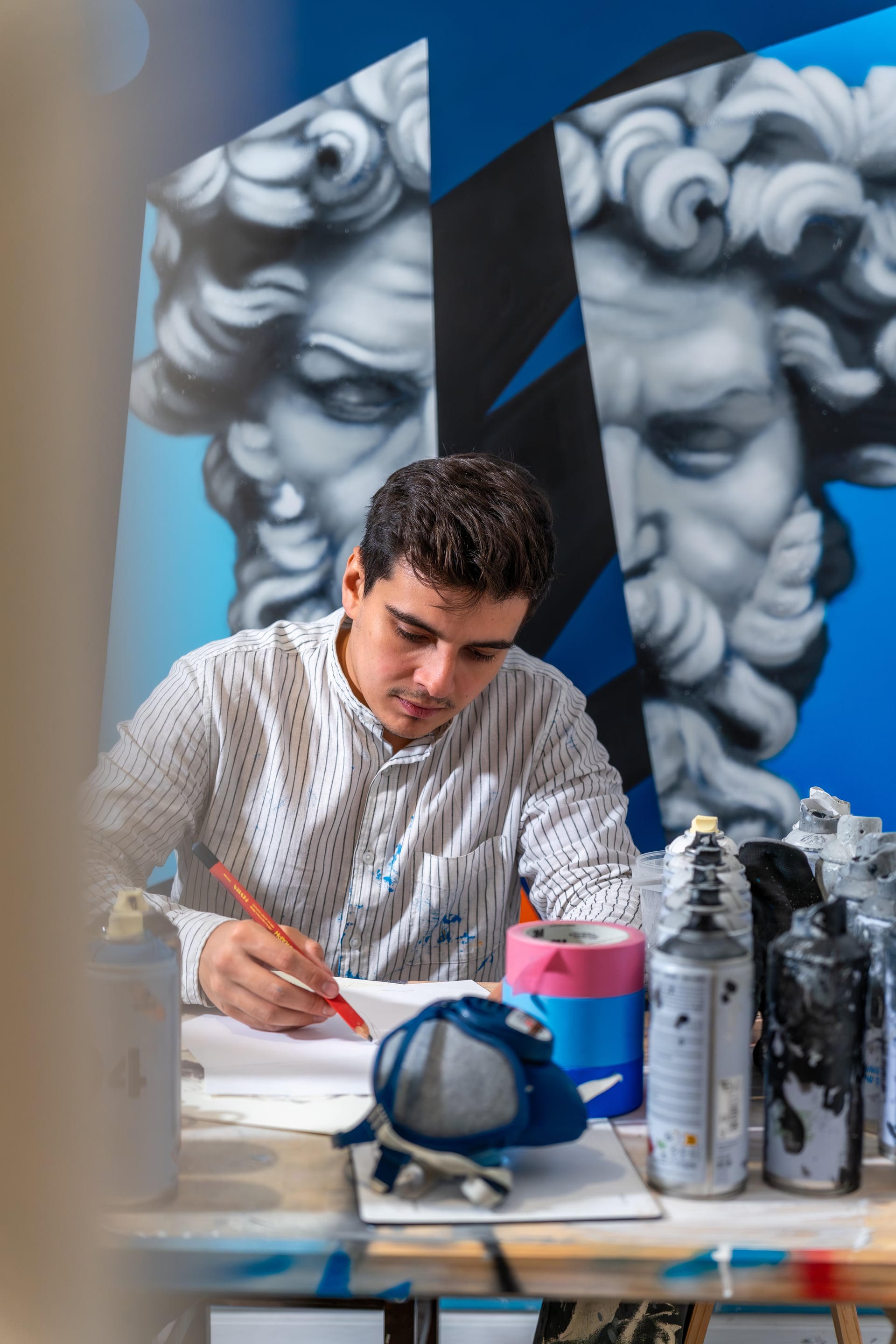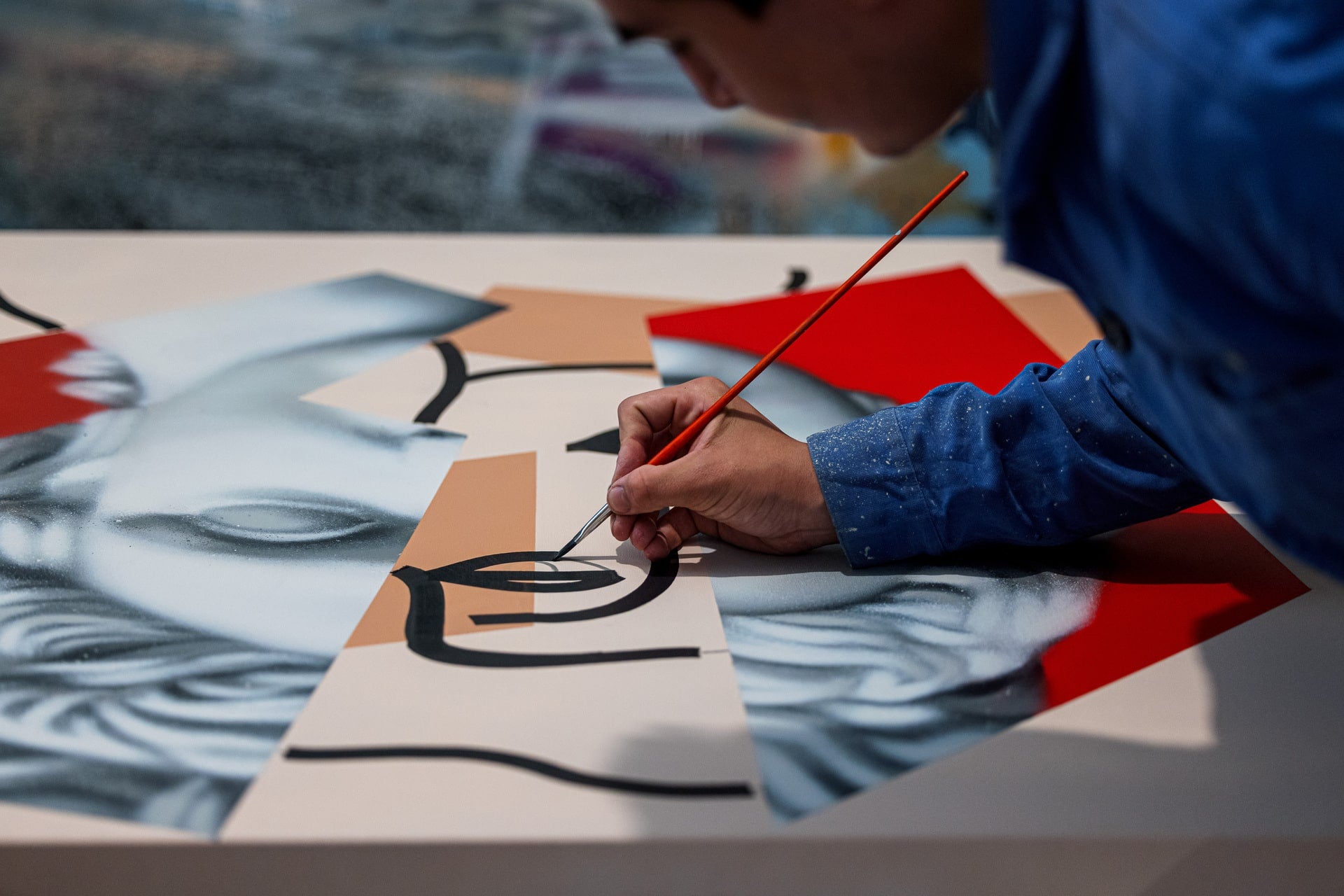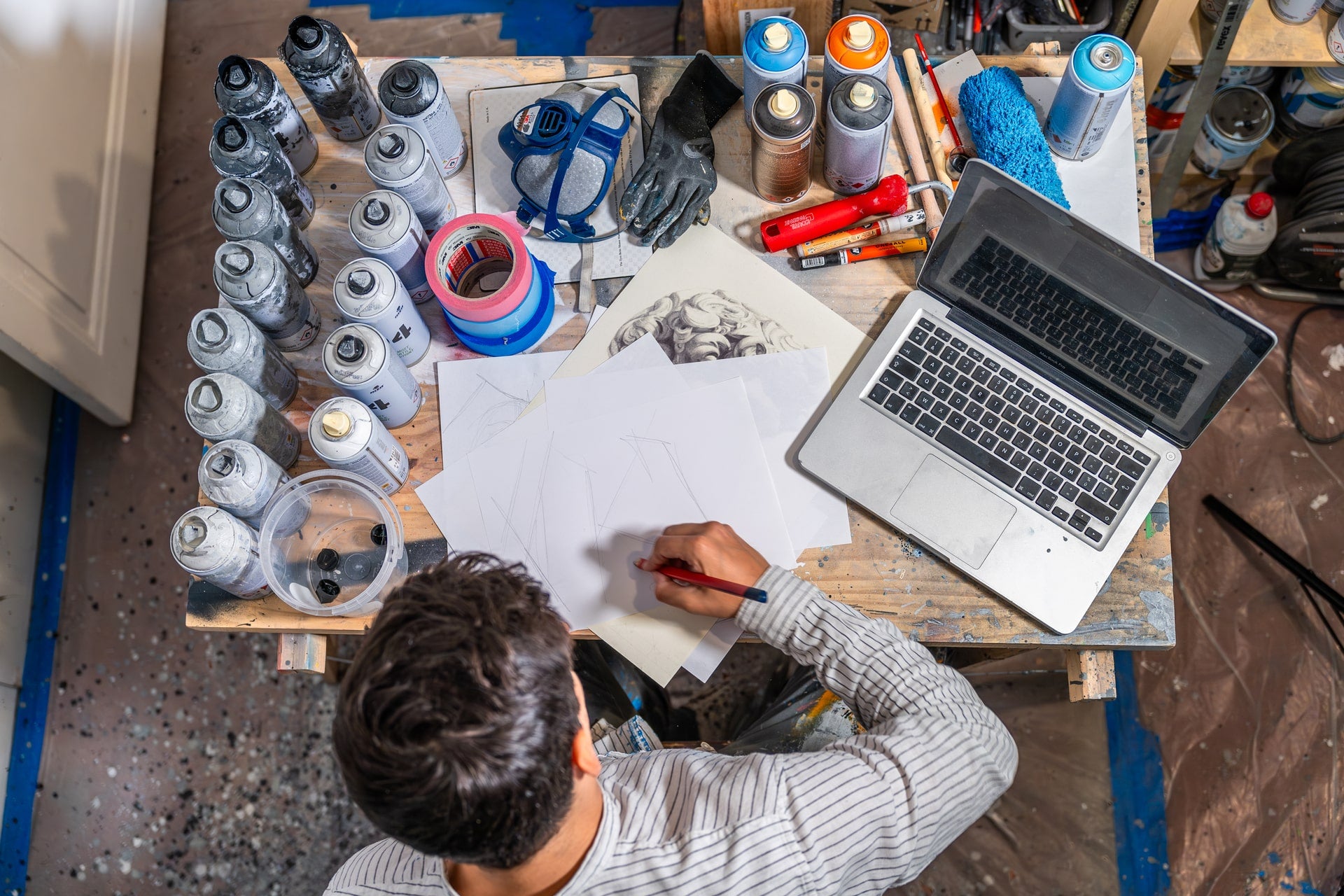Search our site
CÉSAR MALFI IS AN URBAN ARTIST FROM NICE
Noted for his monumental frescoes merging classical and naive styles, he occupies an undisputed place in the Côte d'Azur art scene. A rising star of street art, coming from the world of graffiti, the self-taught artist offers a unique interpretation of ancient art, combining the past and modernity, for creations with a timeless aim.
To remember antiquity is to recall the virtuosity of our elders, their invention of the canons of beauty through their technical prowess.
This classical cultural heritage, César undertakes to propagate it to share it. Following a graffiti accident, another shock comes back to him, aesthetic this time, felt at the discovery of Michelangelo's David, admired in Florence when he was a child. Fascinated by the plastic beauty of the body, the harmony of proportions, the virtuosity of sculpted work, César then undertakes to learn to draw but also to look to be able to create one day in his turn.
REMÉMORER L'ANTIQUITÉ, C'EST RAPPELER LA VIRTUOSITÉ DE NOS AÎNÉS LEUR INVENTION DES CANONS DE LA BEAUTÉ PAR LEUR PROUESSE TECHNIQUE
Cet héritage culturel classique, César entreprend de le propager pour le partager.A la suite d'un accident de graffiti, lui revient un autre choc, esthétique cette fois, éprouvé à la découverte du David de Michel-Ange, admiré à Florence quand il était enfant. Fasciné par la beauté plastique du corps, l’harmonie des proportions, la virtuosité du travail sculpté, César entreprend alors d'apprendre à dessiner mais aussi à regarder pour pouvoir un jour créer à son tour.
HUMANISM
For César, the beauty of classical art "shows what humans are capable of", creating rather than destroying. With the tool of street art, the spray can, he invites gods and heroes into the heart of the city. The masterpieces of yesterday preserved in museums escape under his spray into the streets, offering themselves to all to see. In a humanist desire, the young artist wants to offer Beauty to his contemporaries.
Through this spatio-temporal transfer, César Malfi reconciles scholarly art and popular art in a desire to question our relationship to culture and the place of art in the city.
INSPIRATIONS
If Dali and Magritte embody tutelary figures for César, it is however in Fernand Léger and his naive figures that he rediscovers the candor of his childhood. In a syncretic impulse, he then decides to affix, unite, merge the two classical and modern aesthetics to break the codes as much as to complete the forms. The sculpted face fragments, doubles, interrupts itself to extend itself in a naive and spontaneous outline.
Inspired by a close relationship, he also borrows subliminally from the School of Nice: Martial Raysse for the diversion of the classics and the confrontation of saturated colors, Bernar Venet for the balance and elegance in his gigantism and finally Ben for the freedom of his artistic gesture, his interactivity with the public and his vision of a total art.
If azure blue is primarily used in his works, it is as much for its reference to the Mediterranean context as for its plastic qualities of appeasement, serenity and confidence.
FRAGMENTATIONS
By cutting his composition into geometric shapes, César seeks to structure it better. Like patches that would stick to the surface of the wall, each polygon isolates and enhances a detail of the work in a different flat color. The work thus acquires greater readability but also its singularity. To the shades of gray of these marble models, César adds a palette of complementary colors in a permanent search for balance.
Anxious to give meaning to their presence, César questions the location of his works: "What does the place tell me? What does it tell others? How am I going to make it speak through the work?". Thus Ernest Pignon-Ernest becomes his supreme reference which has allowed him to rethink his work in the city by making a "classical gesture in public space". In his carefully considered contextual and memorial work, César "discovers the virtuosity of the technique and the poetry that he puts into his works." Two essential conditions for the creation of a work according to César Malfi's personal philosophy.




